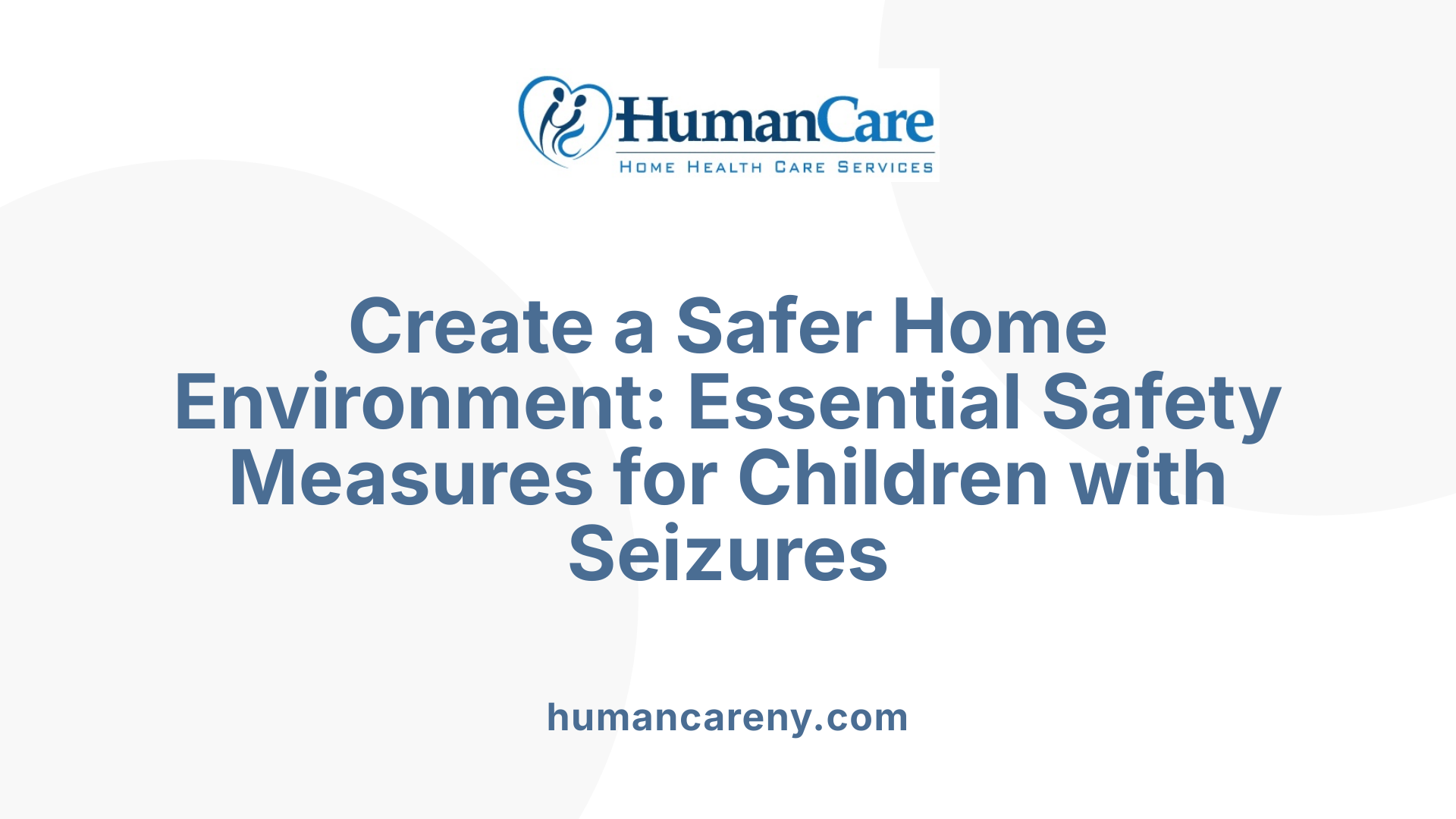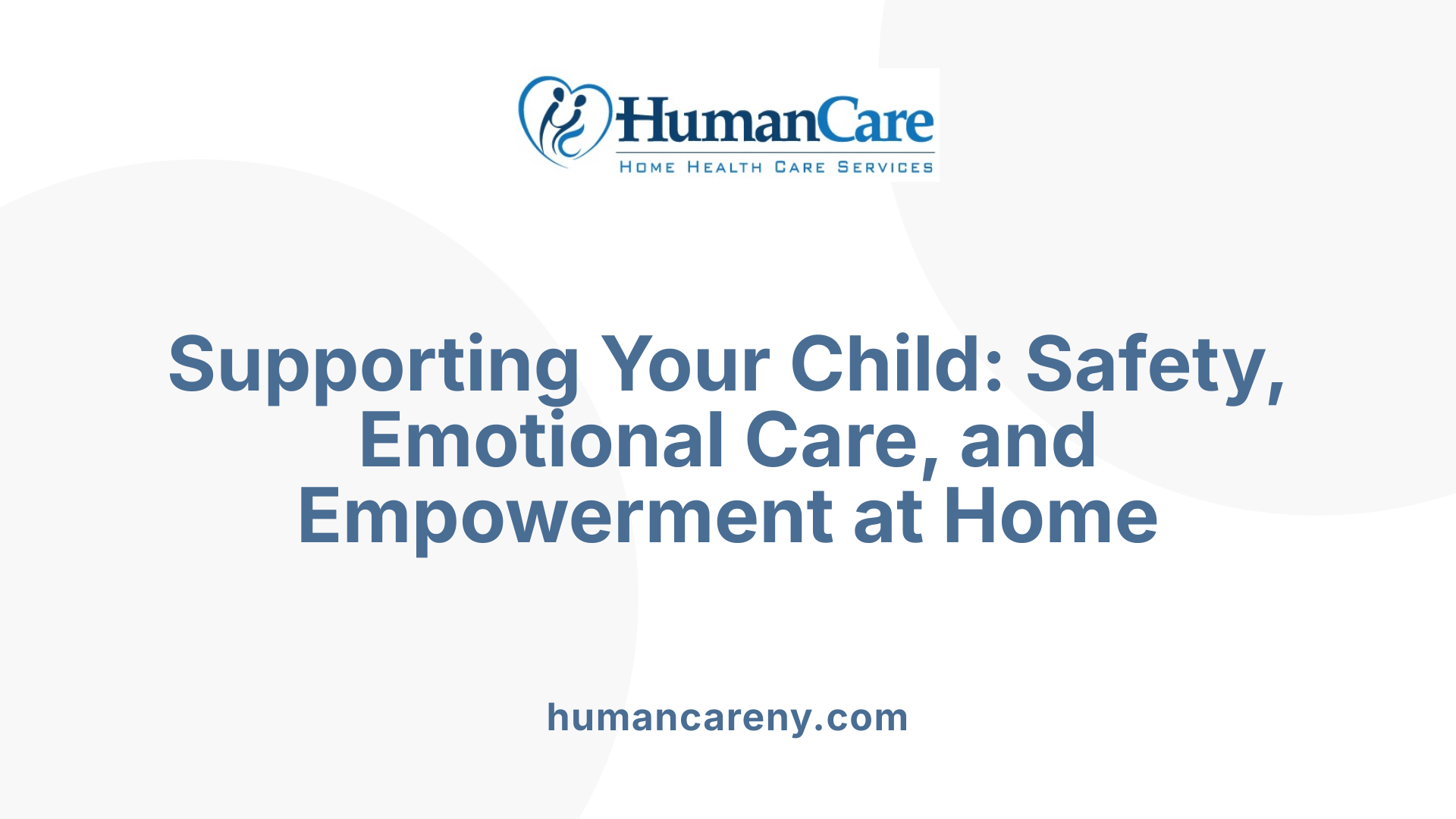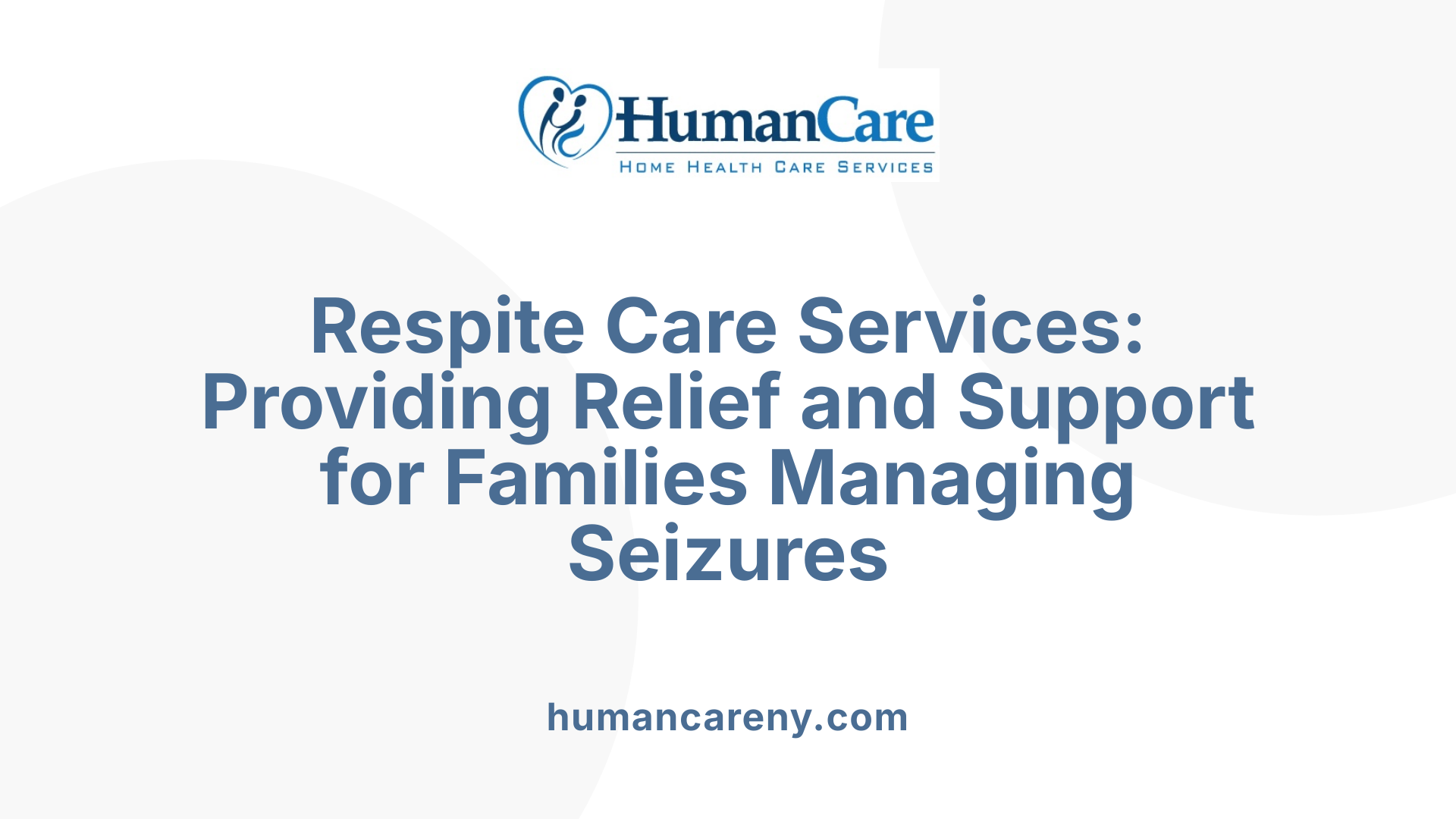Introduction: The Vital Role of Pediatric Home Care
Pediatric home care plays a crucial role in supporting children with seizure disorders, offering personalized medical attention, safety supervision, and emotional support within the comfort of their familiar environment. This comprehensive approach helps maximize independence, improve quality of life, and reduce the stress burden on families managing complex neurological conditions.
Personalized Medical and Caregiving Services at Home
How does pediatric home care support the management of epilepsy and neurological conditions?
Pediatric home care plays a crucial role in managing epilepsy and other neurological conditions by offering tailored medical and caregiving services directly within the child's home environment. This approach enhances safety, encourages adherence to prescribed treatments, and improves overall quality of life for children and their families.
Home health providers assist with essential tasks such as medication management, ensuring that anti-seizure drugs are administered correctly and on schedule. They also support seizure observation and safety monitoring, helping families respond swiftly and appropriately during seizure events to reduce risks and injuries.
In addition, pediatric home care includes training families in seizure first aid, creating personalized safety plans, and managing emergency responses. These services are complemented by telehealth consultations, which allow families to connect with pediatric neurologists and other specialists without the need for frequent hospital visits. This reduces missed school days for children and work days for parents, while also lowering healthcare expenses.
Educational and counseling programs provided at home help families better understand epilepsy, promote self-management strategies, and foster emotional support. Evidence suggests that such comprehensive care—including education, medical management, and psychosocial support—can lead to reduced seizure frequency and improved mental well-being.
Overall, integrating home care services, telehealth access, and targeted education creates a supportive framework that addresses the physical, emotional, and social needs of children with epilepsy. This holistic approach ensures safer, more effective disease management and enhances the child’s ability to lead a full, active life.
Ensuring Safety and Emergency Preparedness at Home

What safety measures and management strategies are recommended for children with seizure disorders in home care?
Managing safety for children with seizure disorders involves a multifaceted approach to protect their well-being and ensure quick, effective responses during seizures. Family members and caregivers should be trained thoroughly in seizure recognition and first aid techniques. This includes knowing how to support the child's head, keep them on their side, time the seizure, and avoid placing objects in their mouth.
Creating a safe environment at home is essential. This involves removing sharp or dangerous objects, padding furniture corners, securing windows and doors to prevent wandering, and installing safety gates or barriers where necessary. It is also important to supervise children closely around water, heat sources, and in high places to reduce injury risks.
Medication adherence is fundamental; establishing routines for taking anti-seizure medications on time can significantly reduce the likelihood of seizure episodes. Using medical alert bracelets or necklaces helps inform others of their condition in emergencies.
Developing a detailed Seizure Action Plan is critical. This plan, made in collaboration with healthcare providers, outlines specific steps for responders, including when to call emergency services. Sharing this plan with all caregivers, school personnel, babysitters, and friends ensures everyone is prepared.
Additional safety strategies include using protective headgear for children at risk of falls and utilizing security devices to prevent wandering, which is common in some cases. Sleep routines that promote sufficient rest and avoiding known seizure triggers, such as certain lights, sounds, or stress, are also helpful.
Fostering independence in medication management with proper support encourages self-confidence and adherence, boosting overall safety. Regular communication with healthcare providers ensures ongoing assessment and adjustments to care plans.
Implementing these comprehensive safety and management strategies is vital to providing a secure environment and empowering families to manage seizure risks confidently.
Supporting Family Members in Child’s Seizure Management

How can caregivers support children with seizures at home?
Supporting children with seizures in the home environment requires a combination of safety precautions, education, and emotional support. Caregivers should create a safe space by removing sharp objects, padding furniture edges, and using gates or barriers around stairs. During a seizure, staying calm is crucial. Caregivers should avoid restraining the child and never put anything in their mouth. Instead, they should gently turn the child onto their side to help keep the airway clear and loosen tight clothing around the head and neck.
Monitoring the seizure duration and the child's breathing is important. If the seizure lasts longer than five minutes, the child has trouble breathing, turns blue, or does not regain consciousness afterward, emergency medical help should be called immediately. Post-seizure care involves allowing the child to rest and recover while observing for any unusual behavior or signs of recurring seizures.
Adherence to medication schedules, ensuring sufficient sleep, and avoiding activities like swimming or bathing alone can help prevent seizure episodes. Caregivers should also keep emergency numbers and seizure action plans readily accessible. Educating themselves about seizure first aid and maintaining open communication with healthcare providers significantly enhances safety and well-being.
Apart from safety measures, emotional support and reassurance help children feel secure. Participating in support groups and educational programs can empower families, reduce anxiety, and improve overall management of epilepsy at home.
Taking these steps contributes to a safer environment and promotes independence and confidence in children as they learn to manage their condition.
Building a Supportive Network and Providing Education Resources
 Families caring for children with epilepsy benefit greatly from a variety of support systems and educational resources. Community support groups, including local and national organizations such as the Epilepsy Foundation, offer a platform for sharing experiences, gaining emotional support, and learning practical management strategies.
Families caring for children with epilepsy benefit greatly from a variety of support systems and educational resources. Community support groups, including local and national organizations such as the Epilepsy Foundation, offer a platform for sharing experiences, gaining emotional support, and learning practical management strategies.
Educational materials—available through hospitals, clinics, and reputable organizations—provide essential information on seizure recognition, medication adherence, safety measures, and lifestyle adjustments. These resources help families understand their child's condition and foster confidence in managing daily challenges.
Seizure recognition and first aid training are crucial components of effective epilepsy management at home. Many organizations offer online courses or in-person workshops that teach caregivers how to identify seizure types and respond appropriately—supporting safety and reducing risks of injury.
Creating a personalized Seizure Action Plan with healthcare providers ensures families are prepared for different seizure scenarios. This plan details emergency response steps, medication schedules, and communication protocols with schools and caregivers.
Additional tools such as seizure tracking apps facilitate ongoing monitoring of seizure patterns and triggers, helping to optimize treatment plans. Support groups and community programs provide emotional resilience and practical assistance, connecting families with others facing similar challenges.
Emergency resources like helplines and trained seizure alert dogs can further enhance safety and reassurance, offering immediate support during uncertain or critical moments at home.
In essence, accessing a combination of community support, thorough education, and practical tools equips families to manage pediatric epilepsy more effectively while maintaining quality of life and emotional well-being.
Educational and Therapeutic Interventions in Home Care
What are the best practices for supporting children with seizure disorders in home settings?
Supporting children with seizure disorders at home requires a combination of safety measures, caregiver education, and emotional support. Creating a secure environment is crucial to minimize injury risks during seizures.
Home modifications include padding furniture corners, installing safety gates, removing sharp objects, and covering electrical outlets. Supervision during water activities, such as bathing or swimming, is vital to prevent drowning risks.
Adherence to medication schedules is essential; caregivers should use reminders or alarms to ensure timely doses of anti-seizure drugs. Developing a detailed emergency action plan and training all family members and caregivers on seizure first aid can significantly improve responses during emergencies.
Open communication with healthcare providers and schools allows for coordinated care, fostering consistent management strategies.
Providing psychological support helps families cope with stress and anxiety related to epilepsy. Connecting with support groups or counseling services can bolster resilience.
Educating children about their condition in an age-appropriate manner promotes independence and understanding. Community resources and educational programs further empower families.
In summary, a safe, well-organized home environment combined with informed, proactive caregiving creates a strong foundation for children with seizure disorders to live active, safe, and fulfilling lives.
The Role of Schools and Community in Supporting Children with Seizures

What are school seizure policies?
Implementing clear seizure policies within schools is essential for the safety and well-being of students with epilepsy. These policies include maintaining detailed health records, having individualized healthcare or 504 plans, and ensuring consistent procedures for seizure response. Schools should regularly review and update these plans, tailoring them to accommodate various activities, from sports to classroom learning.
How can teacher and staff training improve seizure management?
Training school staff, including teachers and support personnel, on seizure recognition and first aid is vital. Proper training enables staff to respond promptly and effectively, reducing the risk of injury during a seizure. Schools are encouraged to develop regular training sessions, ensuring personnel are prepared to handle emergencies confidently. This training improves safety and fosters a supportive environment for students facing seizures.
What is the role of individualized education plans (IEPs) and 504 plans?
Students with epilepsy may require tailored educational supports documented through IEPs or 504 plans. These plans outline specific accommodations, such as safe attendance during physical activities or classroom modifications. Developing and regularly reviewing these plans in collaboration with healthcare providers, educators, and families ensures each child's unique needs are met, promoting academic success and social integration.
Seizure safety in school settings and familial support
A prompt and effective response to seizures in schools is critical for safety. Schools should identify students with seizure disorders, maintain comprehensive records, and designate trained staff to handle emergencies. Keeping open communication channels between families and school personnel helps share vital information about the child's condition, medication schedules, and triggers.
This collaborative approach—combining school policies with trained staff and personalized support plans—helps protect children with epilepsy, allowing them to participate safely in school activities and thrive academically and socially. Access to community resources, such as local epilepsy organizations and healthcare providers, further strengthens the support network, ensuring comprehensive care tailored to each child's needs.
Respite Care and its Contribution to Child and Family Well-being

What types of respite services are available for families managing seizures?
Respite care encompasses various services designed to provide temporary relief for caregivers of children with epilepsy and seizure disorders. These include in-home caregiving, where trained professionals offer support within the family’s home environment. Daycare center care, respite group homes, and host family programs offer alternative settings, facilitating socialization and safety. Emergency respite services can be accessed on short notice when unforeseen crises occur. Each type aims to ensure that children receive appropriate supervision and medical attention while giving families essential breaks.
How are respite services funded, and how can families access them?
Funding options for respite care often come from public sources, donations, and sliding scale fees based on family income, making services accessible regardless of financial situation. Organizations such as the Epilepsy Foundation facilitate access through funding programs and resource coordination. Families typically need to complete an application process, which includes providing medical documentation and physician’s confirmation of the diagnosis. Once approved, respite hours are generally limited to around 25 hours per person annually for services like in-home care. Accessing these services involves submitting necessary documentation and working with organizations to arrange suitable care options.
What are the benefits of respite care for caregivers?
Respite care significantly alleviates physical, emotional, and financial stress among family caregivers. Short-term breaks enable parents and guardians to engage in activities such as resting, connecting with friends, attending appointments, or enjoying personal hobbies. This support reduces caregiver burnout, enhances mental health, and improves overall family well-being. Participation in respite programs has been shown to decrease levels of stress, anxiety, and depression, empowering families to maintain a stable and supportive environment for children with epilepsy.
Resources and Support Available for Families Managing Seizures at Home
Families managing seizures at home can access a comprehensive array of resources, including educational materials, safety protocols, and medication management tips from organizations like the Epilepsy Foundation and the CDC. They are encouraged to participate in seizure recognition and first aid training, available both online and in-person, to respond effectively to seizures. Developing a personalized Seizure Action Plan in consultation with healthcare providers ensures preparedness for various scenarios.
Tools such as seizure tracking apps and joining support groups facilitate emotional support and community connection. Community programs, including educational workshops and counseling, further assist families in managing the emotional impact of epilepsy. Emergency helplines and specialized resources like seizure alert dogs provide additional safety measures. Through these resources, families are empowered to provide a safe, supportive environment for their children while maintaining their well-being.
Enhancing Quality of Life Through Comprehensive Support
How does pediatric home care support the management of epilepsy and neurological conditions?
Pediatric home care plays a vital role in managing epilepsy and neurological issues by delivering personalized healthcare services directly at the child's residence. This approach ensures that medical interventions are tailored to the child’s specific needs, promoting safety, adherence to treatment schedules, and overall well-being.
Home health providers assist families with critical tasks such as medication management, observing seizures, and maintaining safety protocols. This close monitoring helps in early identification of seizure patterns and triggers, allowing for prompt responses and adjustments to treatment plans.
Telehealth options further enhance access to specialized pediatric neurology care. Families can consult specialists remotely, which reduces the need for frequent hospital visits, minimizes missed school and work hours, and lowers healthcare costs. Many families report high satisfaction levels, noting that telemedicine helps them feel more connected to their healthcare team while maintaining convenience.
Educational and personal counseling are also integral to home-based care. These programs aim to improve family members' understanding of epilepsy, teach self-management strategies, and promote emotional resilience. While evidence on seizure reduction remains mixed, these interventions contribute positively to overall disease management.
By combining home care services, telehealth, and education, medical teams can create a comprehensive support system. This integrated approach not only enhances safety and treatment adherence but also addresses the psychosocial challenges faced by children with epilepsy.
Overall, pediatric home care is a powerful tool in improving health outcomes and quality of life for children with seizure disorders, enabling them to participate actively in daily activities, attend school regularly, and develop independence.
Conclusion: A Holistic Approach to Supporting Children with Seizure Disorders in Home Settings
Supporting children with seizure disorders through comprehensive pediatric home care involves safety management, family education, psychological support, and community resources. This integrated approach not only ensures immediate safety during seizures but also fosters independence, emotional well-being, and social participation. With ongoing advances in telehealth, caregiver training, and supportive services like respite care, families are better equipped to manage routine and unexpected challenges. Ultimately, a holistic and compassionate home care strategy enhances the child's quality of life and supports families in navigating the complexities of epilepsy with confidence and resilience.
References
- Care delivery and self‐management strategies for children with ...
- How to Support a Child or Teen with Epilepsy - HealthyChildren.org
- Managing Your Child's Epilepsy
- Evaluating Family Coping Mechanisms in Pediatric Seizure Disorders
- Everything You Need To Know About Pediatric Home Health Care
- Parents care needs with epileptic children: a hybrid model concept ...
- Improving the self-efficacy of caregivers of children with seizures ...
- Respite Care: Lending a Hand to Caregivers - Epilepsy Foundation
- Common Pediatric Conditions Treated with Home Care Services in NJ



